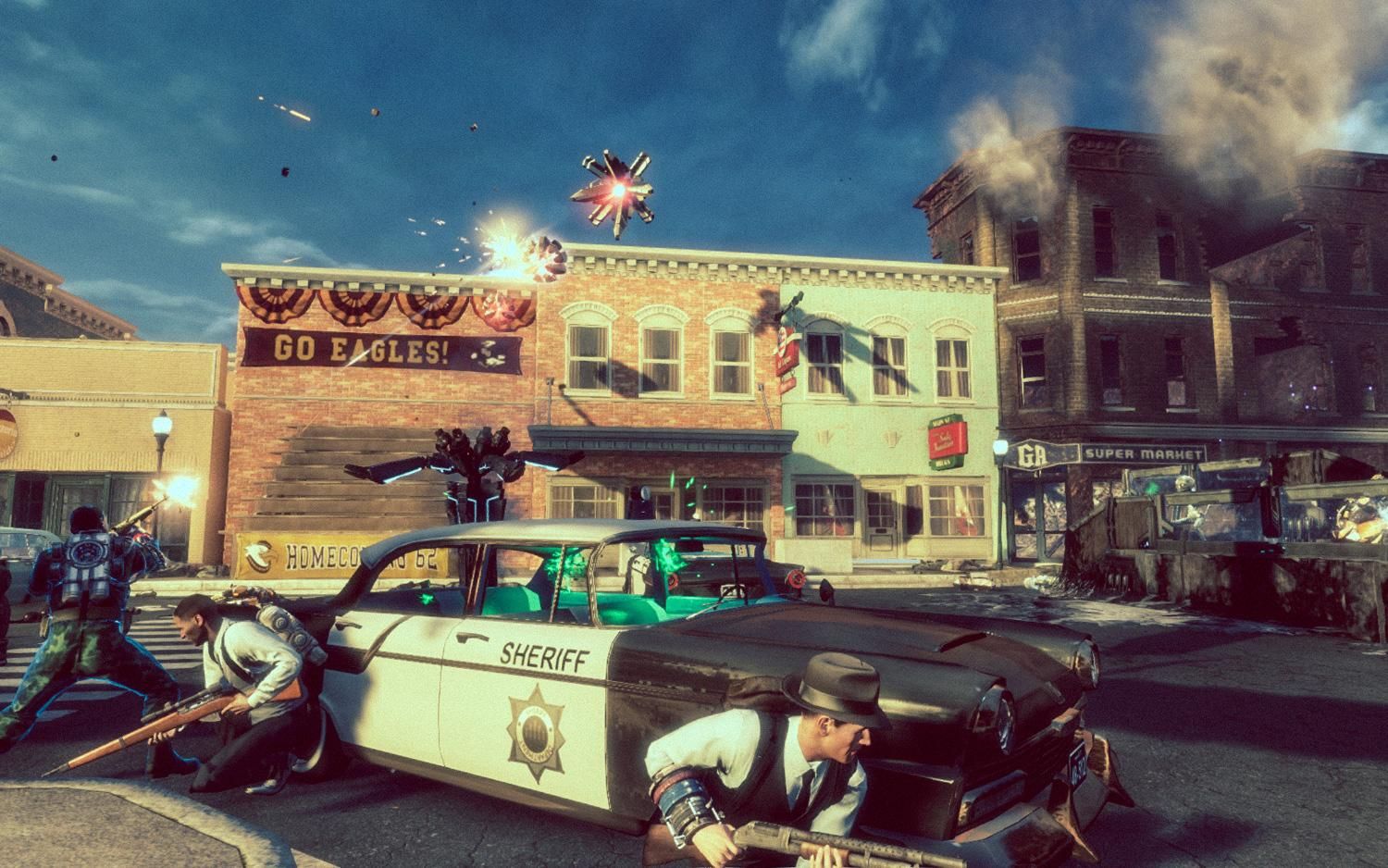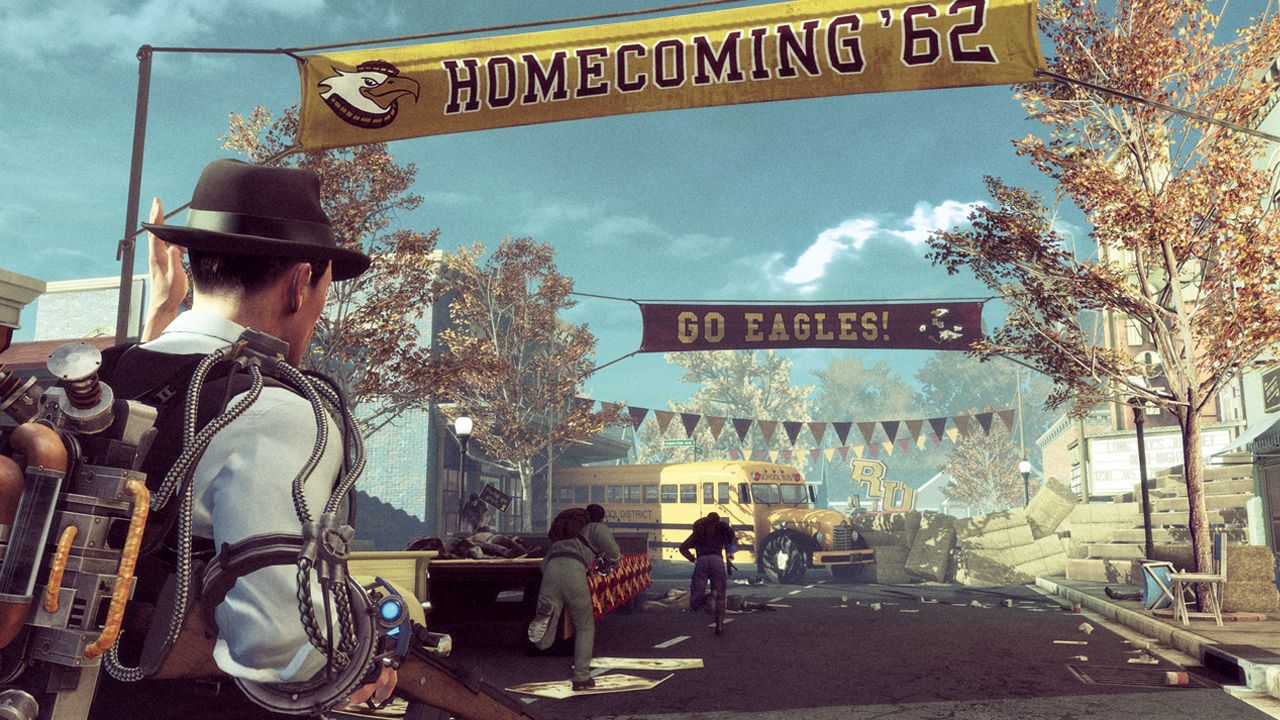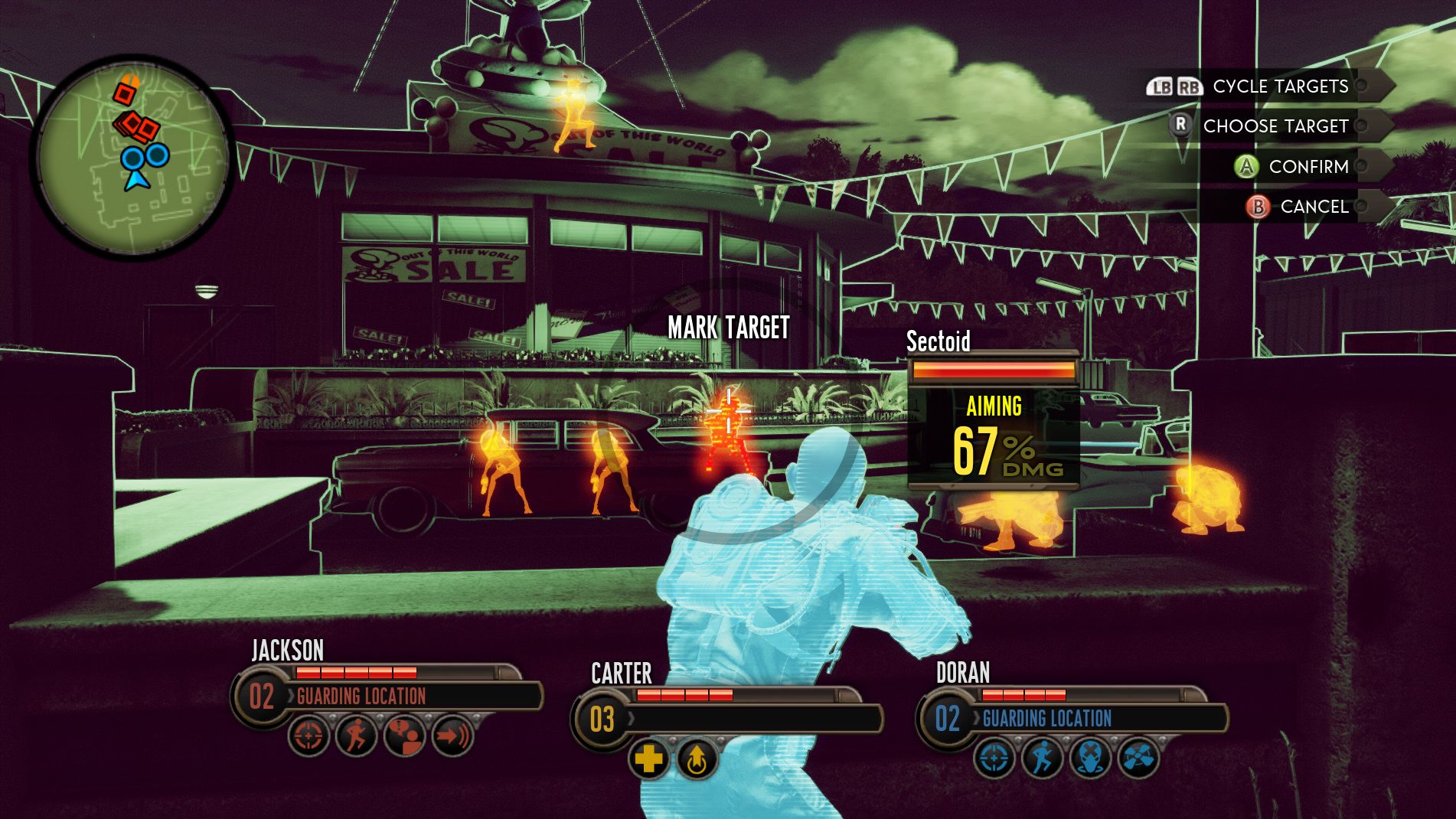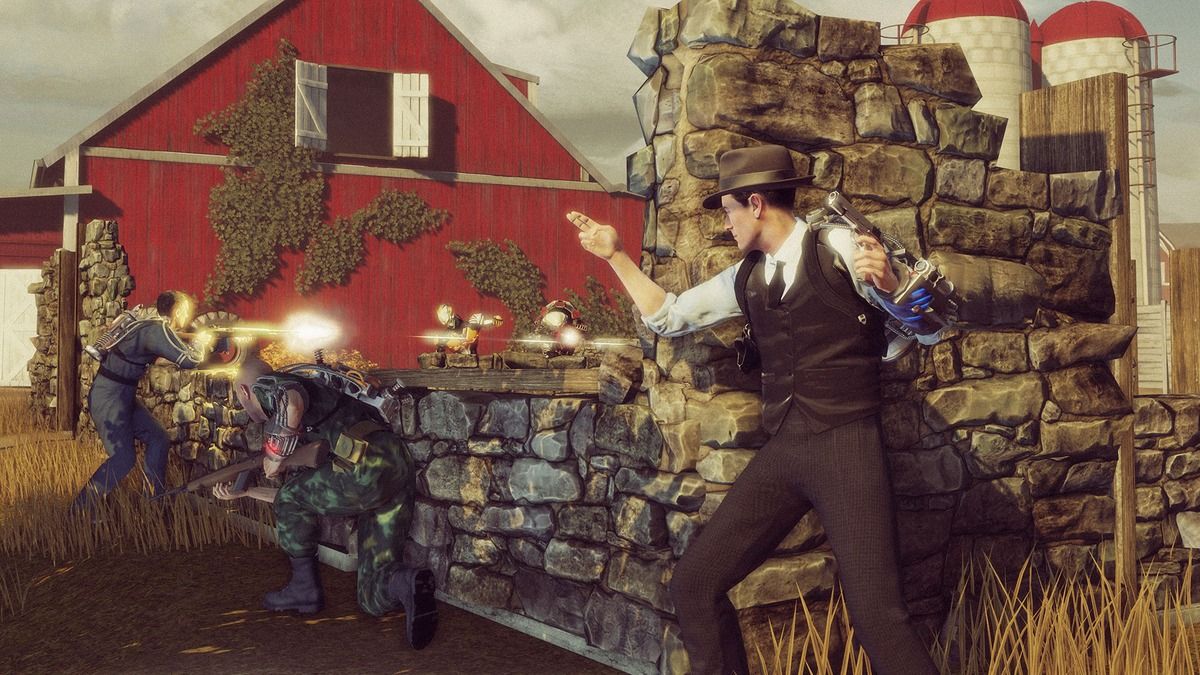"It sucked," Morgan Gray, creative director at 2K Marlin, tells Pocket-lint. It's not often you hear developers criticise their own game, but that's exactly what Gray has just told us about the new Bureau: XCOM Declassified.
Thankfully he is talking about the game's first public outing at E3, the annual gaming expo in Los Angeles, in 2010 when he and his team showed off combat for the first time.
Gray's honesty mirrors many journalists’ and fans’ reactions at the time, but a lot has happened since then. It has been a long and arduous road to release for The Bureau: XCOM Declassified. What started out as a first-person shooter called XCOM went through numerous major changes, eventually becoming a third-person cover-based action game called The Bureau: XCOM Declassified. Four years later and it is a very different proposition to the game Gray and his team originally started work on.
Pocket-lint visited California-based 2K Marin and was given full access to both the studio and the game. In the process, we uncovered a story with as many twists as the Alien conspiracy in the game.
In the beginning...
First, a bit of backstory. XCOM is one of the most beloved franchises in gaming history. The original game, UFO: Enemy Unknown (or X-COM: UFO Defense or X-COM: Enemy Unknown as it was known internationally) popularised turn-based strategy games in the Nineties, and is still included on many "Best Games of All Time" lists nearly 20 years later.
The franchise all but disappeared in the early 2000s, until 2005, when publisher 2K Games acquired the series from then-owner Atari. A year later, job postings by Bioshock creator Irrational Games suggested it was working on an XCOM title, but the rumours never amounted to any formal announcement. Fans had to wait until 2010 for Bioshock 2 developer 2K Marin to show up at that year’s E3 with the first new XCOM game in nearly nine years. And, much to the chagrin of that audience, it wasn’t a PC strategy game in the mould of previous XCOM games, but rather a first-person shooter targeted at a console audience. As Christoph Hartmann, 2K Games president, told industry magazine MCV at the time, "strategy games are just not contemporary."
Gray explains what was happening behind the scenes: "At the time, we were still collaborating with 2K Australia [on Bioshock 2], and so the idea to do an XCOM game had been within the 2K family for a while. 2K came to us with an interesting charter; find a unique gameplay experience within the XCOM franchise that just hadn't been created before."
When the team’s first-person shooter was unveiled simply as "XCOM", the reaction from fans wasn’t good. "It intrigued a lot of people, but it was failing to fulfil on the real promise of being a true XCOM game. It could have been anything - we joked it was more X-Files than XCOM, and so we on the team didn't think it was the best foot forward," says Gray.
Jeff Weir, the game’s Art Director, agrees: "The game in 2010 was cool, but it really didn't really feel like XCOM."
Erik Caponi, who joined the team as lead writer a year and a half into the project, offers his take on it as someone who was simply a fan at the time.
"I think what's interesting about [The Bureau] is that, quite frankly, we came out and talked about it too early," he says.
Battle Focus
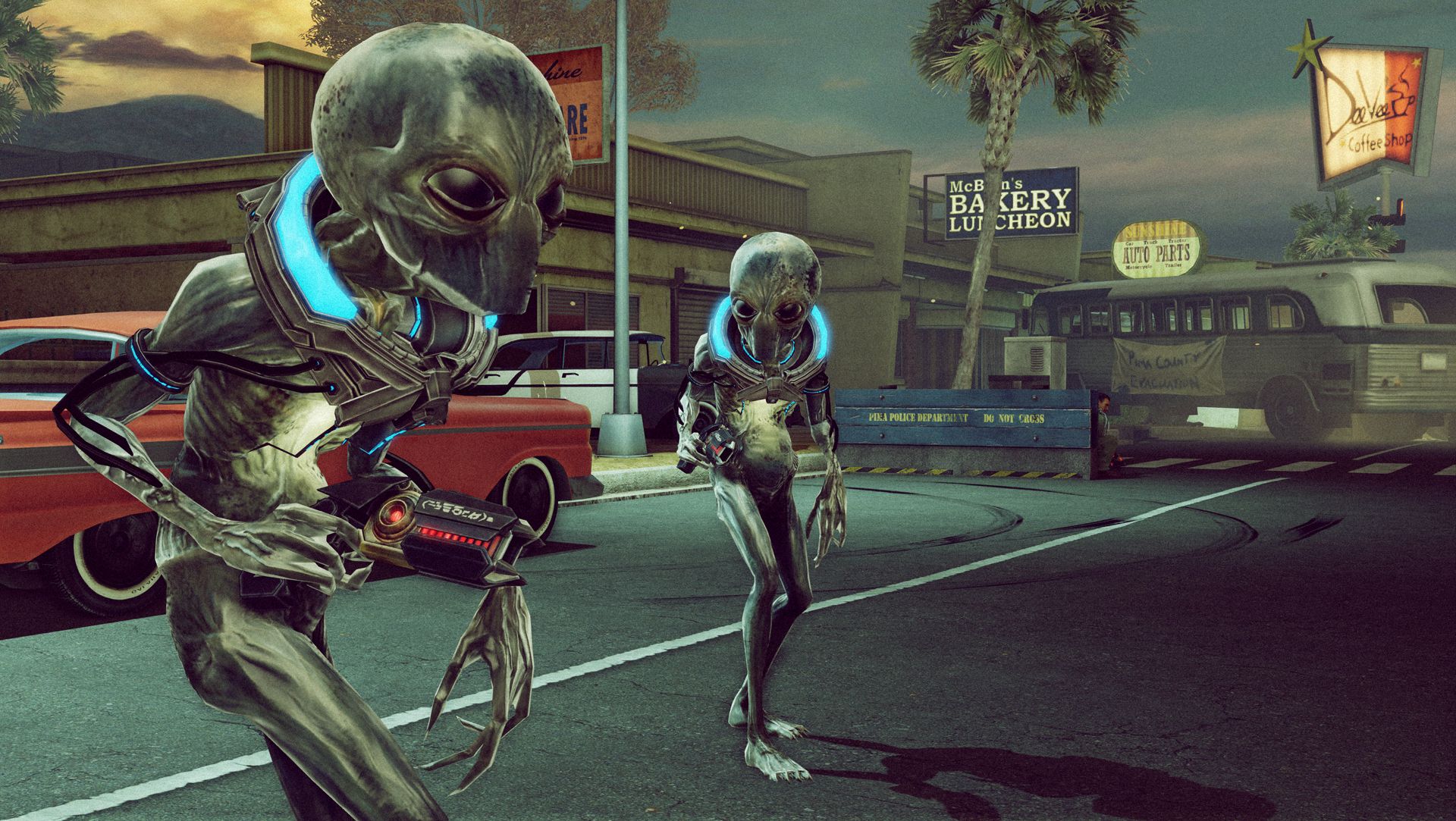
Following a heap of criticism from fans ("Yes, we do read the forums," says a weary-sounding Gray), 2K Marin regrouped and completely reworked the combat system, influenced by action movies such as Black Hawk Down.
"What would it be like if you were playing the role of Gorman from Aliens?" says Gray. "Controlling the battlefield from above while the bullets are flying?"
Trying to capture this feeling resulted in the Battle Focus system, which returned XCOM to its strategy roots by incorporating squad commands that were issued from a top-down "god's eye" perspective. The changes resulted in a game drastically different from its first outing when it was shown the following year at E3 2011.
This major about-turn caused complications for Gray, who initially struggled to communicate his vision to the team.
"We had a high degree of internal confusion ourselves, as is witnessed from us originally showing the game and then drastically altering it. The big one for us was cementing that vision of tactical combat being the focus, being the squad leader in the battlefield, and then having a few guys [on the team] get it. Permeating that to the rest of the team was extremely difficult, and having the touchstones of games that we could point to and go ‘exactly like this’.
"There are a few games, there's Full Spectrum Warrior, classic Rainbow Six, early Ghost Recons, but they don't combine the real-time squad control depth [of The Bureau]," he continues. "Nor do they combine it with a strongly woven narrative, with RPG aspects, so there was no clear game that we were a clone of.
"It was really a long process to educate the team on what we're making, what aspects of what are we taking, what new things are we trying to invent, and how it is coming together so that the whole team was capable of understanding the vision and executing on it. That was difficult, because we were very much figuring it out as we went along for a while there."
In the meantime, senior staff including Ed Orman, lead designer, and Andrew James, art director, began to depart 2K Marin to form their own studio.
At the same time, international co-ordination with 2K Australia on the game was also proving to be "challenging", in the words of Gray. International development is a common method used by most modern game studios these days; six Ubisoft studios across the globe collaborated on Assassin’s Creed III, for example.
"Technically, some of the larger challenges was doing co-development with our Australian friends," explains Gray. "They're all great guys, but it's very difficult to work when there's a 16 hour time difference, on a day-to-day basis. Having the overlap of two studios was difficult, just that workload was a challenge."
External Perception
Although the 2011 showing of the game was a more positive experience for 2K Marin, the studio still sensed it had a problem with how the game was being perceived at that stage.
"When we showed a prototype of that early exploration in 2011, people really went yes, yes, this seems good!" says Gray. "To be quite frank, people also said, 'Oh, you're just doing Bioshock again, but slapping XCOM on it'. And we were like, ‘No, we're not doing that!'"
Then there were the hardcore XCOM fans who felt the team was trampling on sacred ground.
"The other major challenge through the course of development was making sure that both the team and the 2K organisation ultimately knew what we were attempting was an experience that was supplemental and enhancing to the XCOM universe, without rebooting or trying to supersede what had come before. The perspective that we were usurping something holy as if we didn't hold it holy ourselves as XCOM fans was a huge challenge and I think it was a source of much frustration."
Battle Focus v2
The reaction at E3 2011 had been better than the previous year, but there was still some way to go for the team at 2K Marin. "None of the AI was working, and it needs to work on all cylinders for this kind of game to come across. The general team reaction was, 'We're making what? I don't get it'."
The team continued to refine the strategic battle system for the next year, replacing strategic commands from a traditional top-down view to a radial command wheel that was easier for console players to navigate.
Gray explains: "Giving you an interface that gives you all the control you need and nothing you didn't, because we're still constrained primarily to console controllers, was a lot of work. We had a lot of iterations where that was like, 'This a brilliant game that is unplayable' to 'That is so simplistic, that is not credible as an XCOM game'.
"We took a lot of time iterating on that until we felt we had it right, and then after that point, it was very hard for us to figure out how do we teach players how to do all of this." As a result, the game begins with a half-hour tutorial section.
Jeff Weir, the game's art director, elaborates: "The biggest hurdle we had to come across was the attack mode, because we tried to find a way to play with yourself and two other agents and feel like one team together. Until we got that figured out, the game was sort of floundering and didn't really feel right, and I think it was figuring out that the game really was about this level of control that you get out of the Battle Focus, and understanding that was really where it came alive."
Still, perception continued to be a concern for 2K Marin. "I think if people see screenshots of The Bureau, they'll leave with one impression - 'Oh, it's a radial wheel, that looks like Mass Effect'," says Gray on the command system. "Yes sure, if you see a screenshot, I can see the comparison, and that's great, nothing bad with being compared with games that are awesome. But when you see it in motion, you start to quickly learn there's a lot more depth."
The demo at E3 2012 was still played from a first-person perspective, but the final major change came soon after the show. The perspective was shifted to a third-person view after extensive play testing, and cover mechanics similar to titles such as Gears of War were added.
In October 2012, website Kotaku reported rumours that the game would become a cut-price downloadable game and be delayed once again. The website said "[It sounds] like 2K is set to pull an I Am Alive, cutting its losses on a troubled project and trying to make the best of a bad situation by selling it on the cheap." This didn’t turn out to be true, but it was clear 2K was still struggling to communicate what it’s game was really about.
The Light at the End of the Tunnel

While The Bureau: XCOM Declassified’s four-year gestation seems to be longer and more dramatic than most video games, Erik Caponi has some perspective on the project. "[Four years] is actually only slightly longer than most projects," he says. "I think what's interesting about this one is that, quite frankly, we came out and talked about it too early. I wasn't around then, so I was just looking at it as a fan and development of this game is not dissimilar to what happens in most games, it just happened to go on in public. So it looks like 'they did this thing, then they did another thing, then they did something completely different', but I have never worked on anything creative that looked at the end how it looked at the start."
Caponi came to 2K Marin following work on the narratives for massive open-world games such as The Elder Scrolls IV: Oblivion, The Elder Scrolls V: Skyrim, Fallout 3, and Kingdoms of Amalur: Reckoning.
"[With The Bureau], it just happened that 2K Marin flapped its dirty laundry a little bit, and I think it's interesting because now we have a chance to talk a little bit in public about the process of creating the game. When we do these sorts of things, a lot of times it's just kind of us repeating the bullet points on the back of the box that you're gonna go pick up in the store. But it's a good chance to talk about this process, because in some ways it goes on behind the curtains and I know a lot of the fans are interested in it, and they want to hear what goes on behind that curtain, but we're a little, as an industry, buttoned up sometimes."
The End
When we visited 2K Marin, the team had finished the game and was waiting for various approvals from platform holders ("Microsoft just finished testing the German version, it passed, woo-hoo!" says Gray.) When we played the game, we were impressed with how well the combat worked in concert with the Battle Focus system. We were less impressed with the story and dialogue, because they seemed to follow standard sci-fi conventions and clichés.
We are optimistic about the quality of the game, although after a four-year wait, 2K has chosen to launch the game on the same day as Splinter Cell: Blacklist, Saints Row IV, The Wonderful 101 and Disney Infinity.
Gray is optimistic though, as that day represents the culmination of four years on a single project.
"What really feels good is when you've got all the approvals, you know it's been shipped off, and then there's launch day, when you try and tell yourself 'I am not gonna look, I'm not gonna look!' but you're sitting there hitting F5 on reviews and going, 'Let's see, let's see'."
Whatever the outcome, he plans to relax by playing flight sim games in his brand new cockpit simulator.

